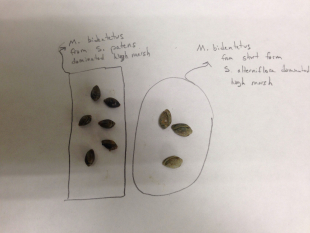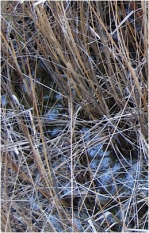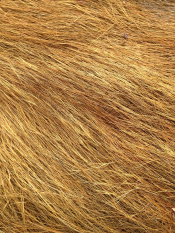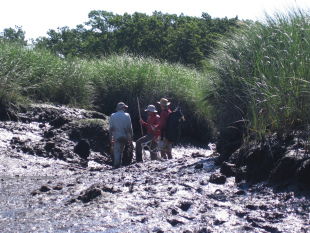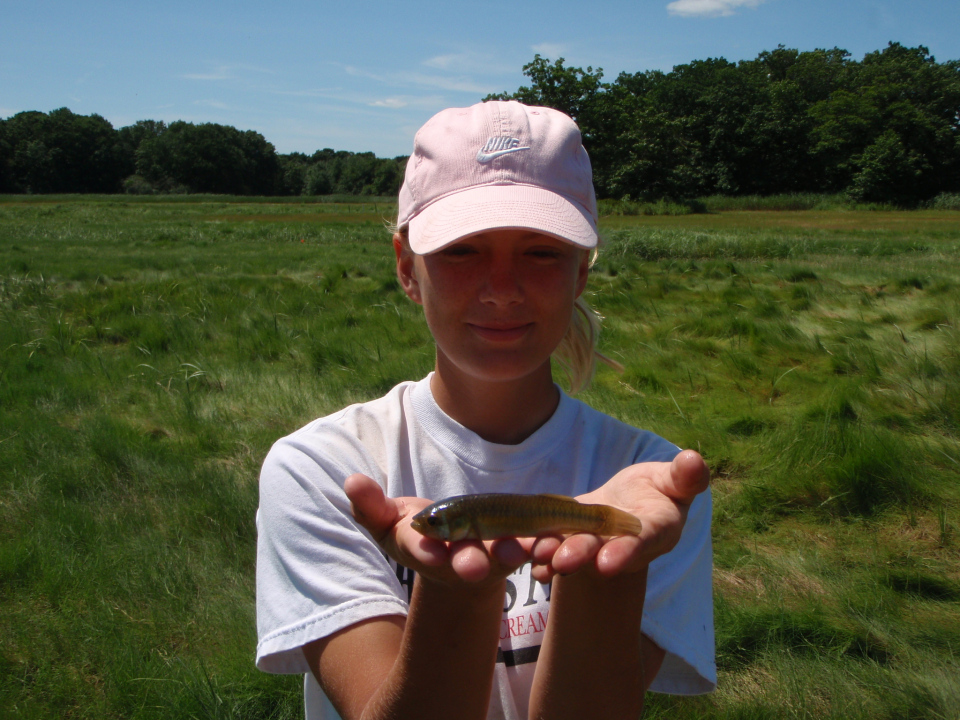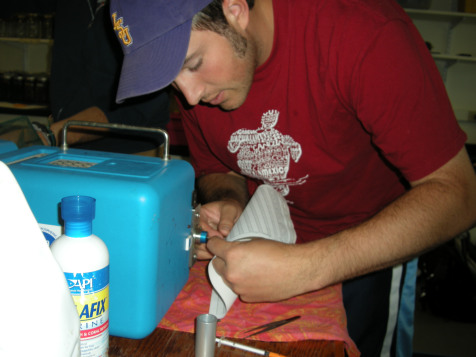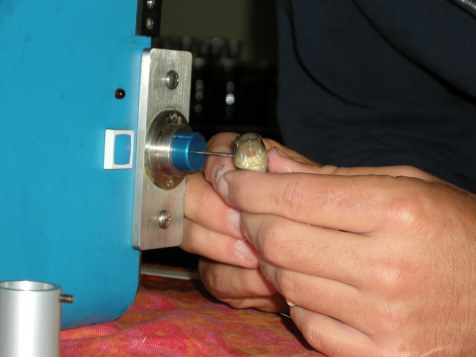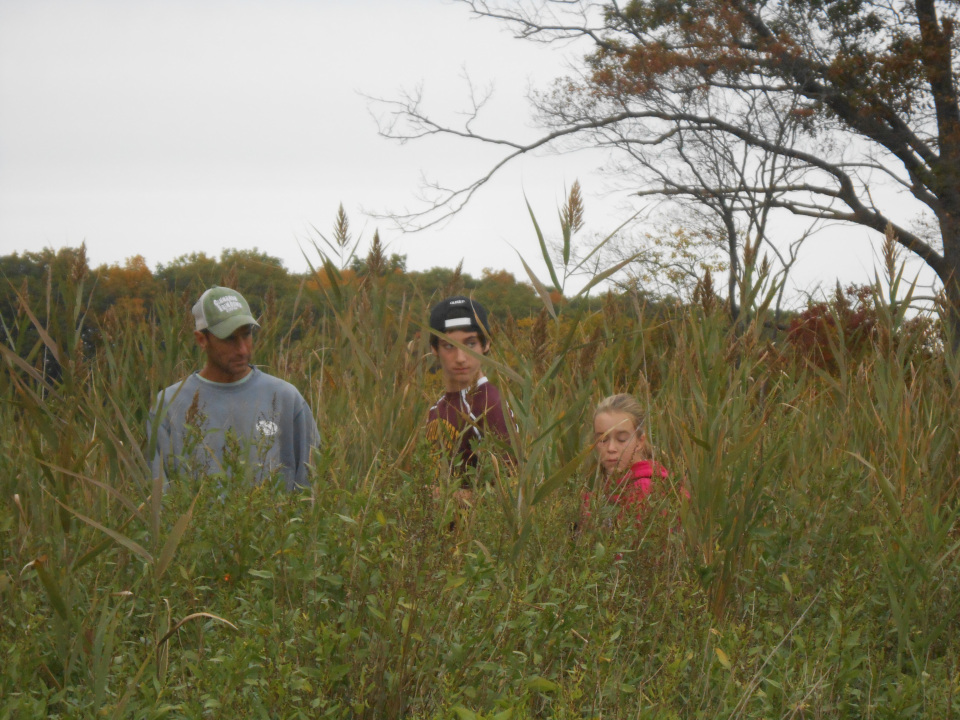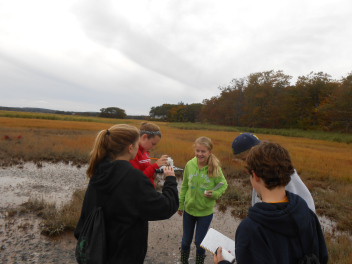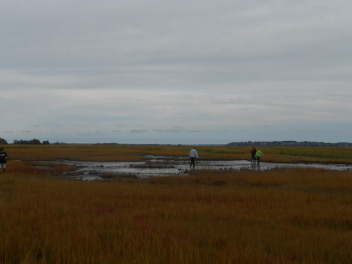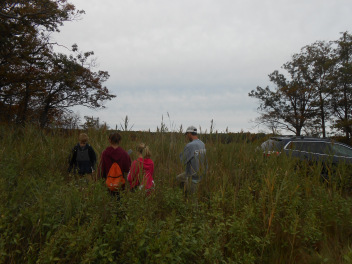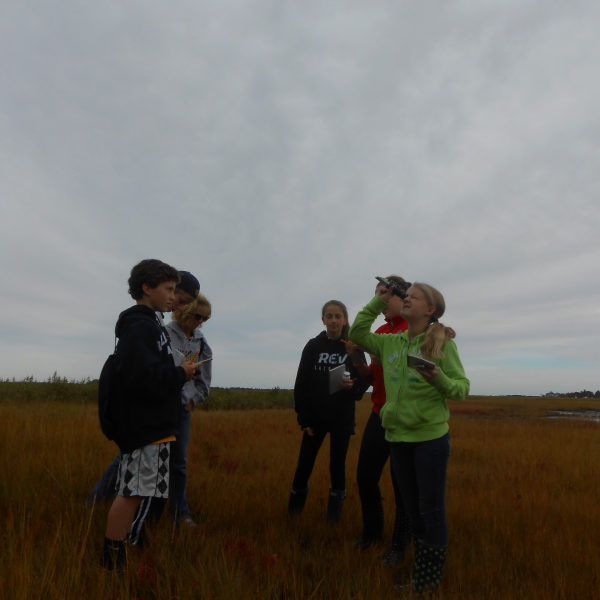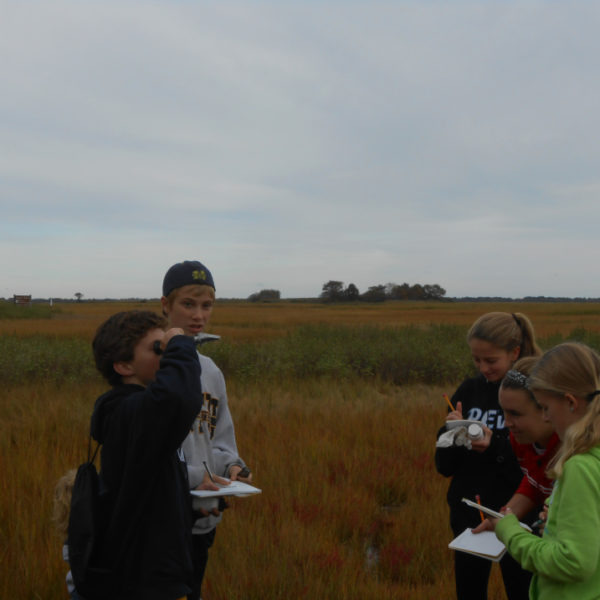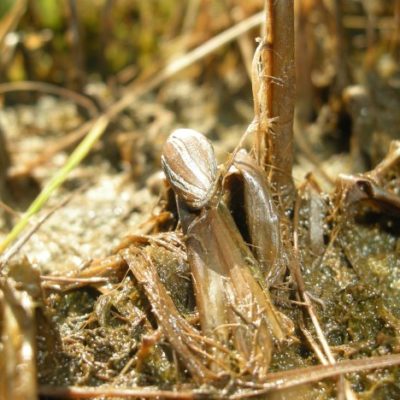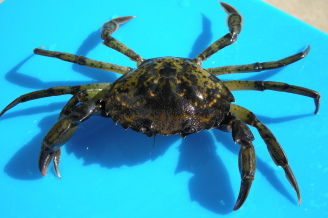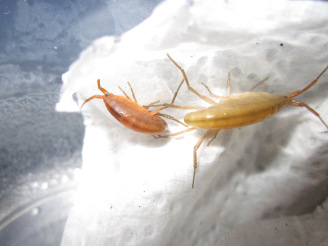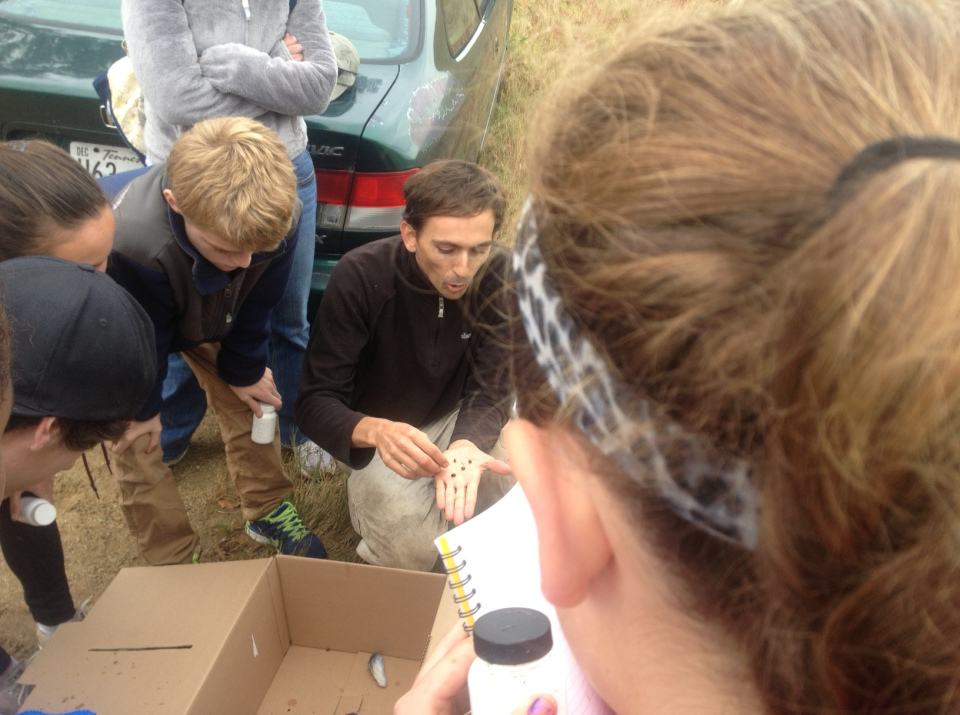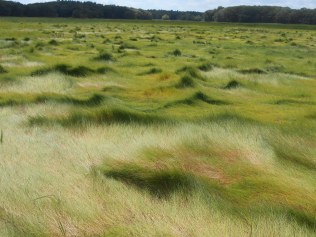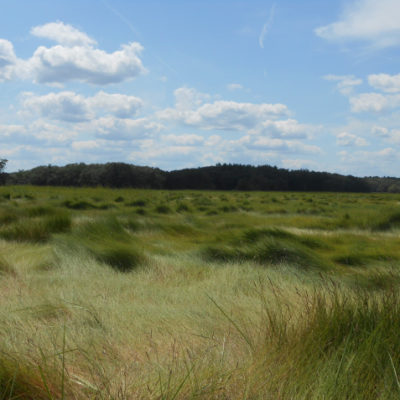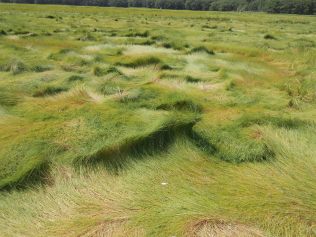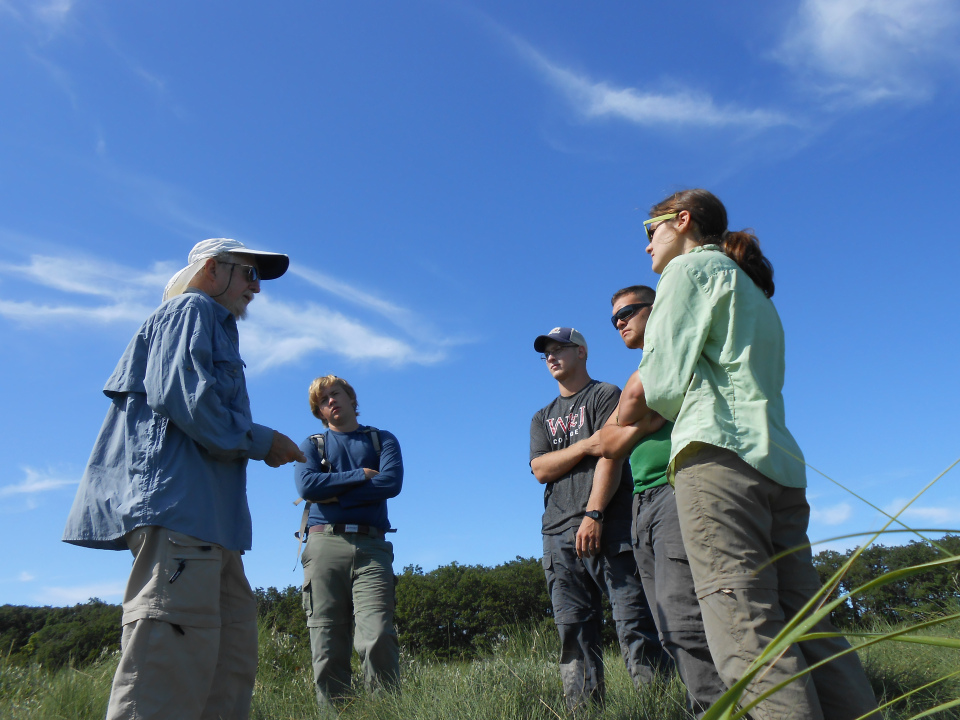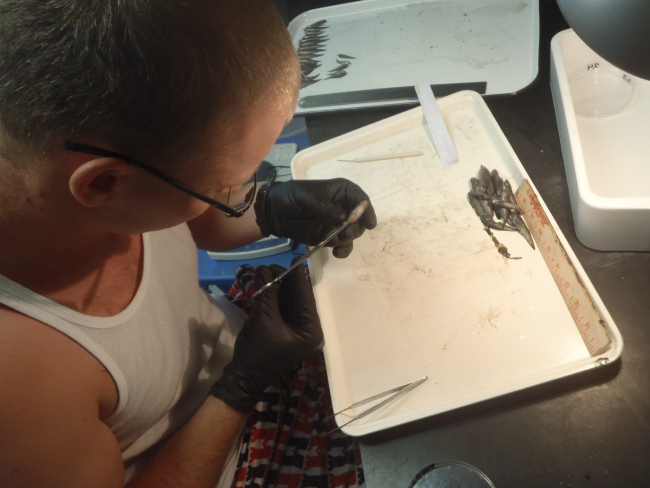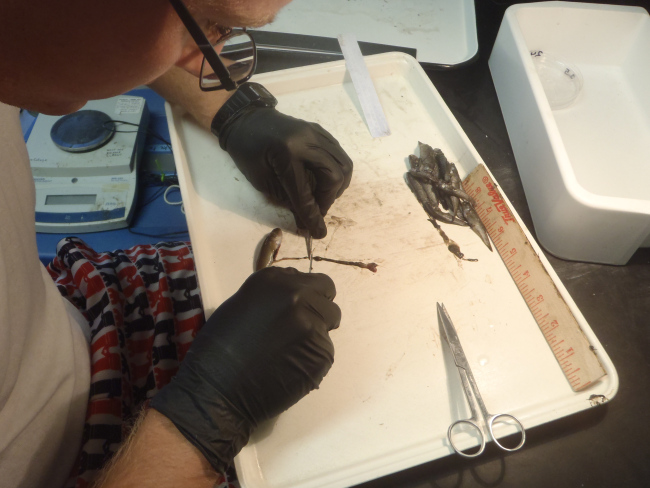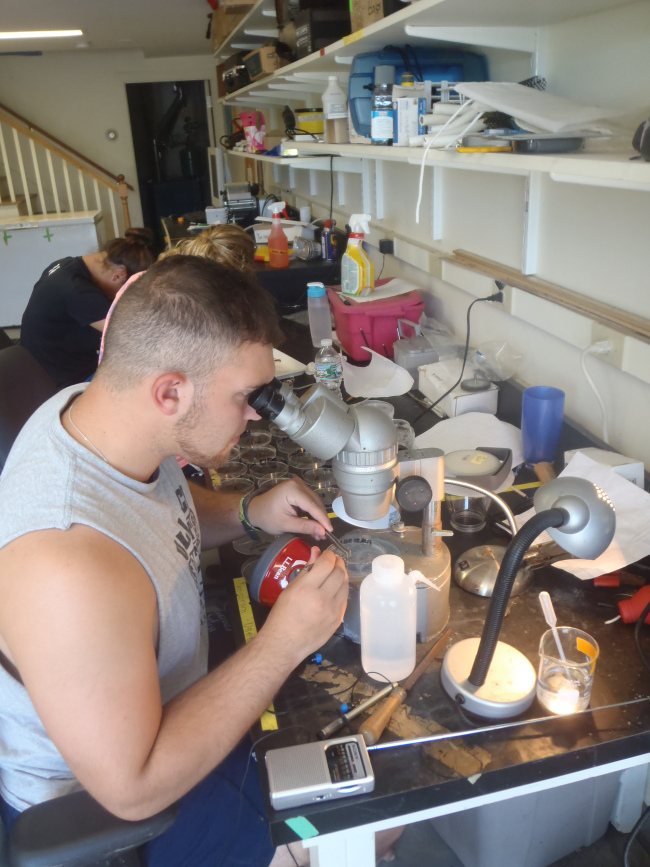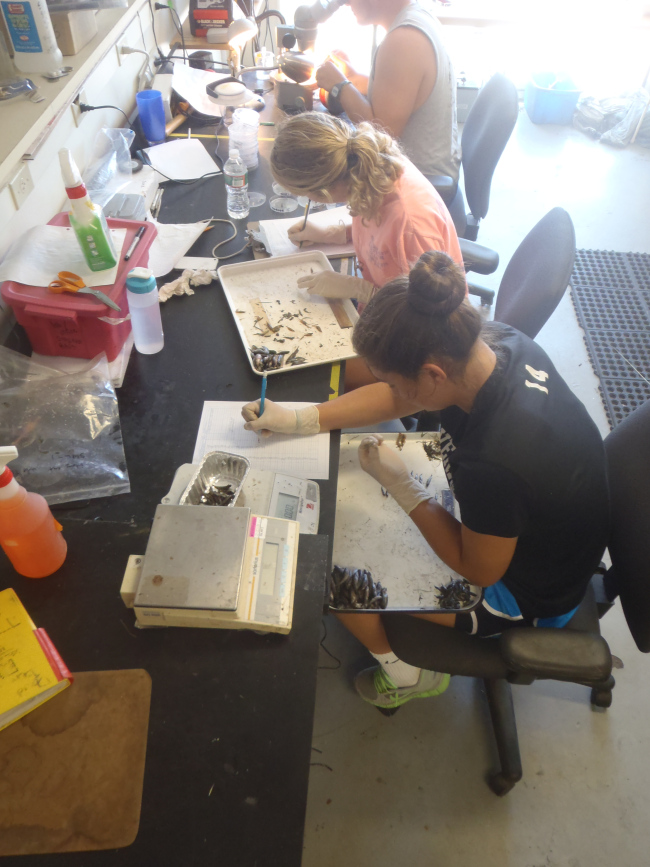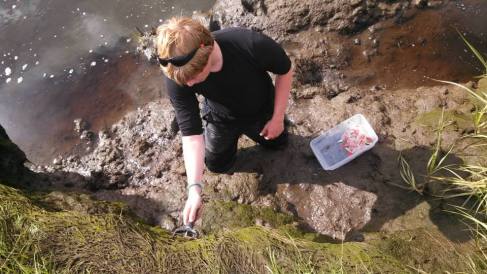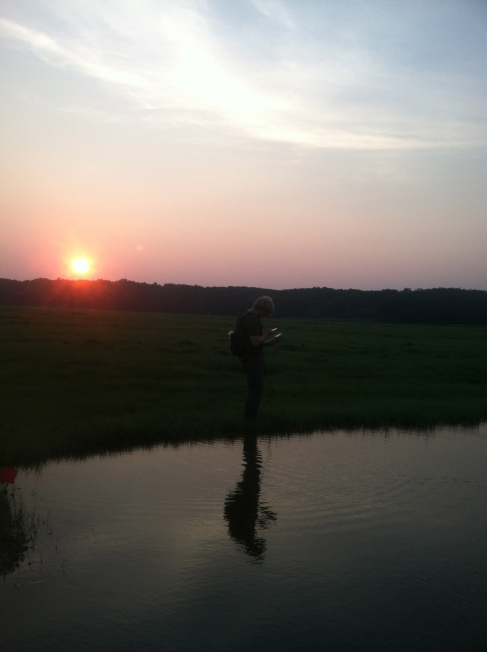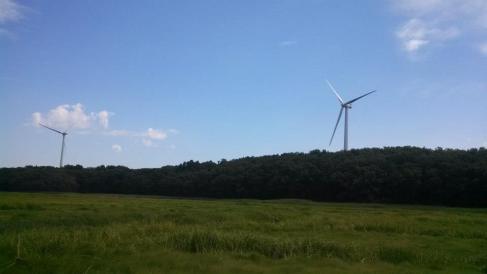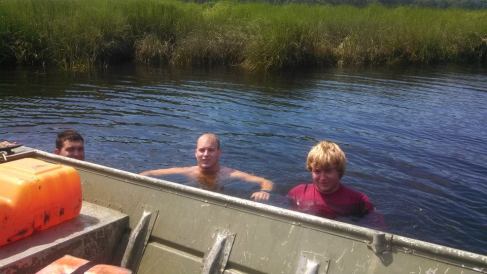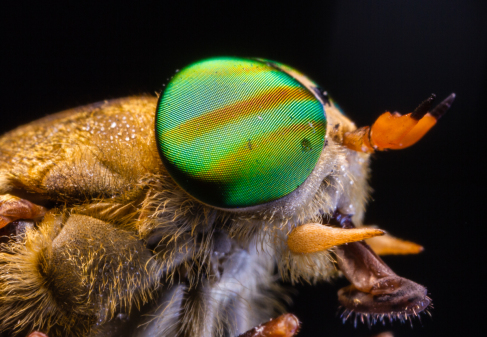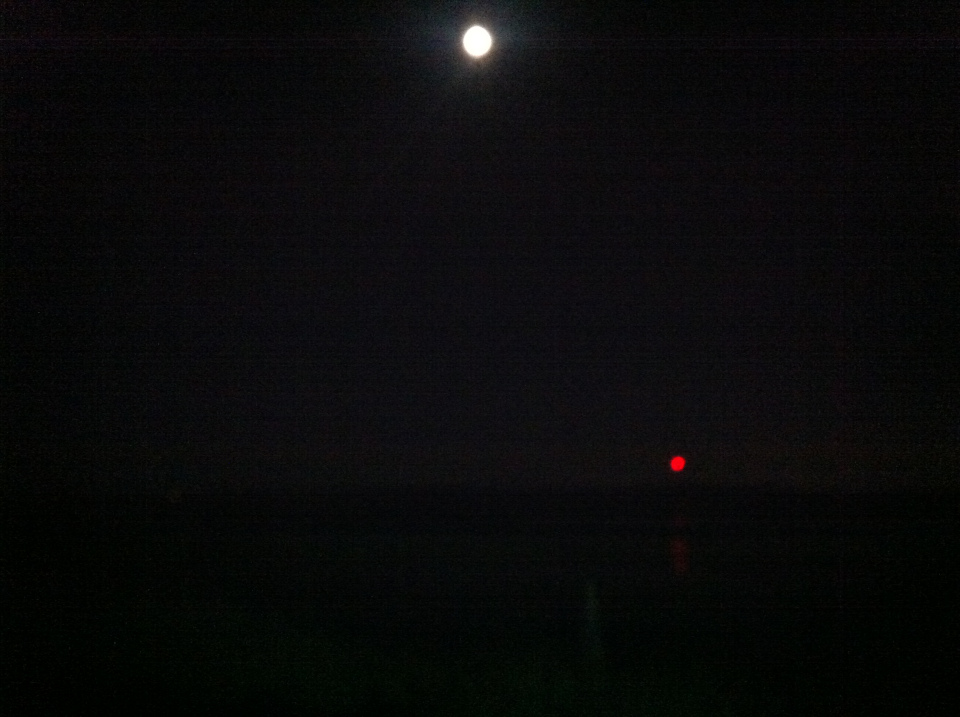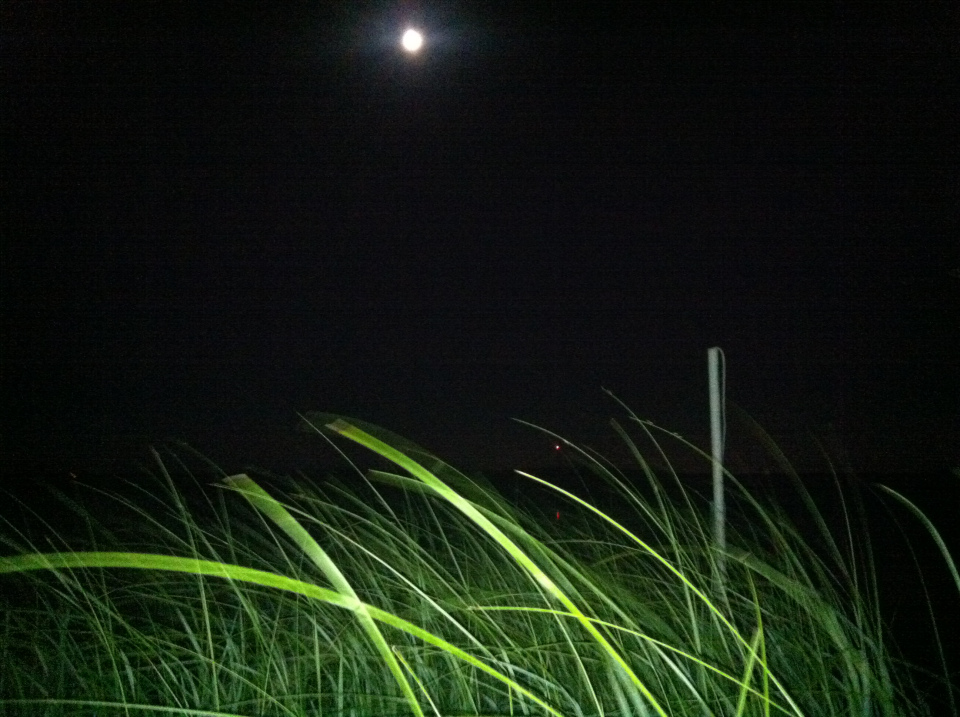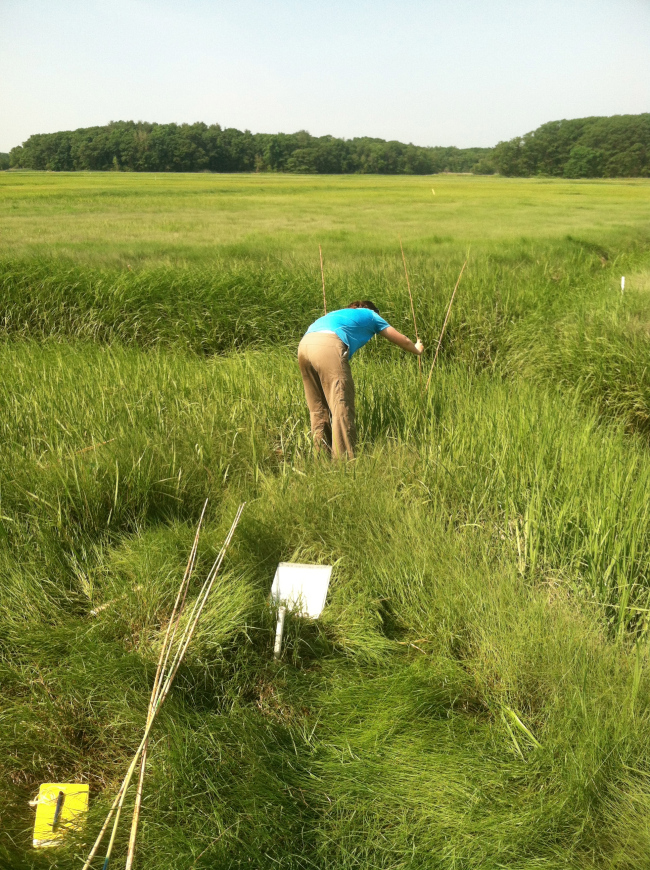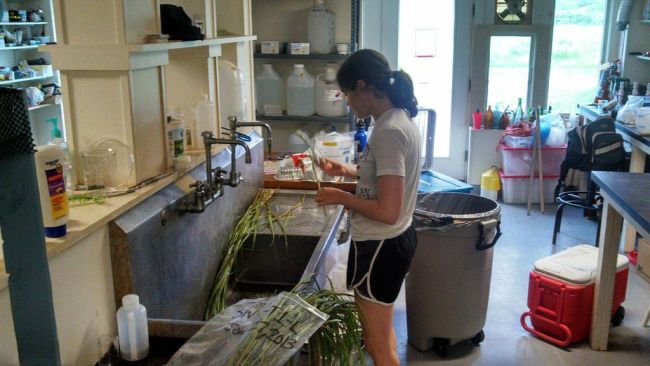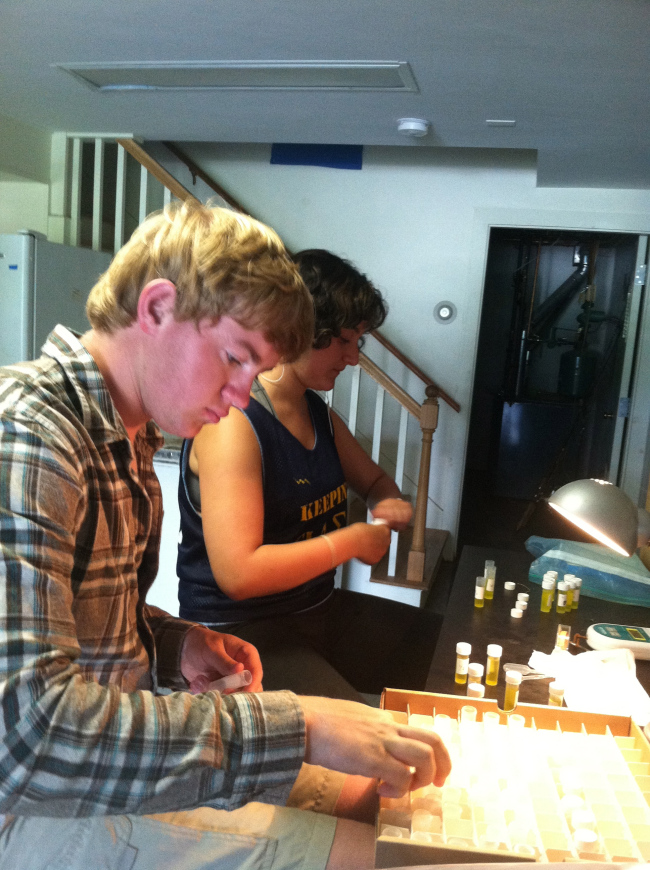Though unnoticed on my first visit to the Rowley marshes, I soon became well acquainted with Melampus bidentatus, or the coffee bean snail, during subsequent stem counting, transplant planting, and genetic sampling ventures. While working in close proximity with the coffee bean snails, I began to notice trends in their distribution across the high marsh. Coffee bean snails appear more abundant but smaller in Spartina patens dominated high marsh, less abundant but larger in short form S. alterniflora dominated high marsh, and conspicuously absent from the tall form S. alterniflora where the high marsh borders the creek bank. The question is: what factors are determining the distribution of coffee bean snails on the high marsh at Plum Island? I needed to know more about the snails.
Coffee beans snails are pulmonate (air-breathing) as adults but are tied to the sea by a planktonic larval stage. Snail spats settle into the high marsh at the size of 690 um and do not reach their adult size of ~12 mm until over a year of growth (Apley, 1970). Coffee bean snails feed mainly on decaying plant matter and algae (Graca et al., 2000). A number of marsh predators prey on coffee bean snails such as the ubiquitous mummichog, many different marsh birds (Hausman, 1932), and green crabs (David Johnson, pers. comm.).
Could predation be the key to snail distribution? A 1976 study by Vince et al. supports the predation hypothesis. This study shows that the high stem density of S. patens acts as a natural ‘fence,’ excluding predators from eating palatable snails. Thus, small snails, which make up the majority of the population, are confined to S. patens by predation pressure, while larger snails inhabit the low stem density, ‘un-fenced,’ S. alterniflora habitat because their size protects them from most predation. Vince et al. (1975) hypothesizes that larger snails are drawn into the higher risk habitat because the lower snail density in S. alterniflora may lead to greater resources per snail. This study may explain the difference in snail sizes and abundance I observed between S. Paten habitat and short form S. alterniflora habitat on the high marsh. But what about the complete absence of snails in the tall form S. alterniflora on the creek bank edges at the Rowley Marshes?
Dr. David Johnson (aka Mr. Marsh to the Marshview House faithful) posited an alternate hypothesis. He suggests that physiological limitations are the primary driver of coffee bean snail distributions. Because coffee bean snails are air breathing, they do not thrive in areas with a high frequency of tidal inundation. S. patens occurs at higher elevations on the marsh platform (wet only during spring tides). Conversely, the tall form S. alterniflora dominated habitats on creek bank edges are likely the lowest areas of the high marsh (wet at almost every high tide). Differences in the frequency of tidal inundation across habitats could influence the abundance of coffee bean snails on the high marsh. Just as too much water can drown snails at high tide, too much sunlight can cause desiccation at low tide. As a result, coffee bean snails avoid direct sunlight (Hausman, 1932). Larger snails may be more resistant to desiccation than their smaller counterparts. High marsh short form S. alterniflora seems to provide less percent cover than S. patens and this difference in shading could influence the abundance and size of coffee bean snails in these habitats.
I cannot test these competing snail hypotheses at the moment due to the frozen creeks and snowy peat of the winter marsh. Indeed the short days and cold weather has put an end to most marsh fieldwork and I have been effectively exiled to the lab until spring. For now, I am stuck with many questions, some guesses, and no answers. However, the New England winter gives me time to hone my knowledge and plan my approach so that when I get the chance, I can pursue informative questions in an efficient manner. In a way, by taking a step out of the marsh, I am gaining a better understanding what I want to do on the marsh and how I want to do it.
Forest Schenck is a Research Technician at Northeastern University Marine Science Center in Nahant, Mass. He works with TIDE collaborators Drs. David Kimbro and Randall Hughes of Northeastern.
